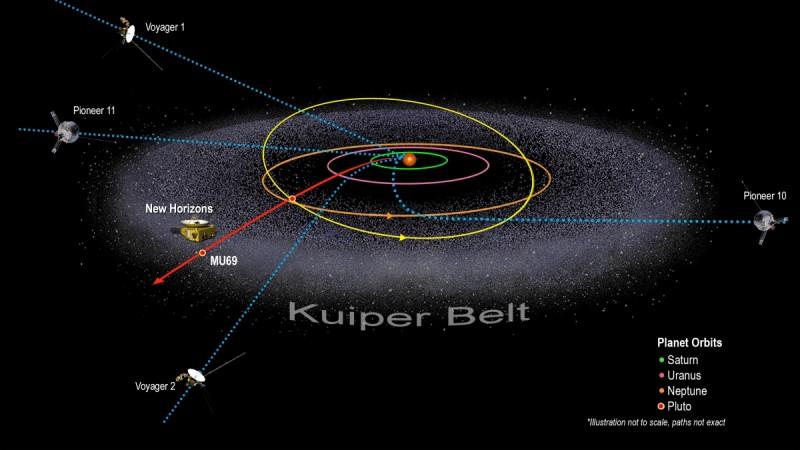
NASA's New Horizons spacecraft has detected its next target, nicknamed Ultima Thule situated in the Kuiper Belt. It is to pass it closely on January 1, 2019.
Researchers had not expected the New Horizons' Long Range Reconnaissance Imager (LORRI) to have the capacity to see the dim little object 100 million miles away, against a thick cluster of stars.
Unlike many previous spacecraft that have a single destination, New Horizons has several points of interest, and this time, it's Ultima Thule.
Taken on August 16 and transmitted through NASA's Deep Space Network, the 48 pictures denoted the group's first endeavor to discover Ultima with the spacecraft's cameras. "The image field is extremely rich with background stars, which makes it difficult to detect faint objects," said Hal Weaver, the project scientist for New Horizons.
"It really is like finding a needle in a haystack. In these first images, Ultima appears only as a bump on the side of a background star that's roughly 17 times brighter, but Ultima will be getting brighter – and easier to see – as the spacecraft gets closer," said Weaver, LORRI principal investigator from the Johns Hopkins Applied Physics Laboratory in the US. This first recognition is crucial because observing Ultima throughout the following four months will help the craft to find out the closest way to approach Ultima.
Ultima was found at the same place it was expected to be, using information accumulated by the Hubble Space Telescope, which means that the research team already has a smart thought of Ultima's orbit. The flyby to Ultima will be the first-ever exploration of a small object in the Kuiper Belt, which will also make it the most remote exploration of any planetary body ever, shattering its own record of Pluto in July 2015 by around one billion miles.
The Kuiper Belt is at the outskirts of the Solar System and consists of different kinds of dwarf planets like Pluto. Measuring 20 miles in diameter it is a smaller part in the belt but has many curiosities for scientists that will be revealed when the spacecraft reaches Ultima Thule on the first day of the upcoming year.

















